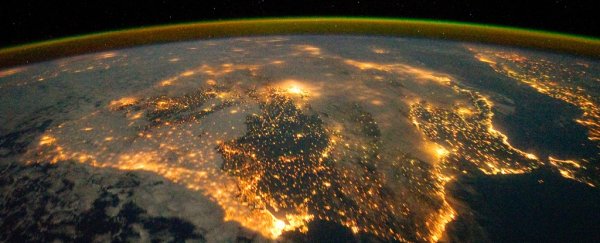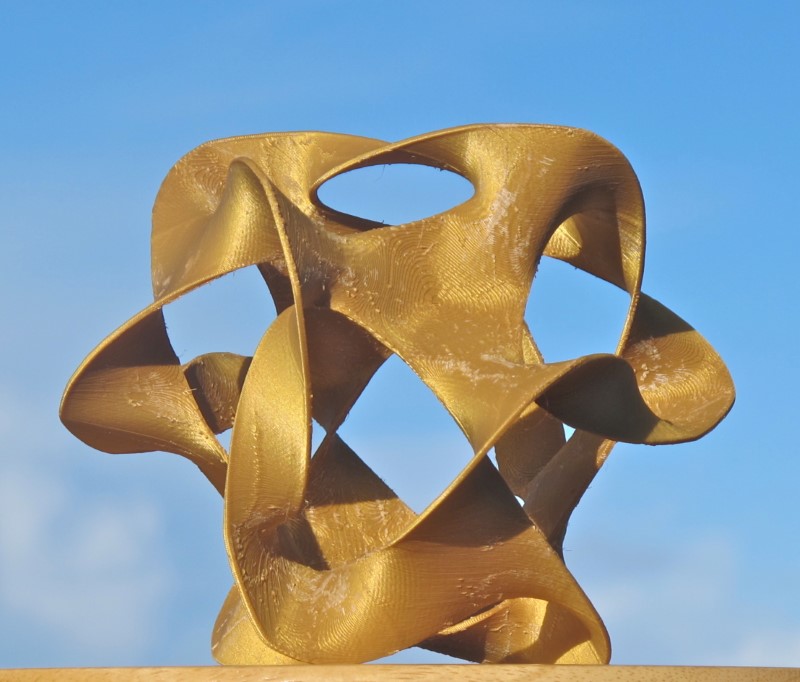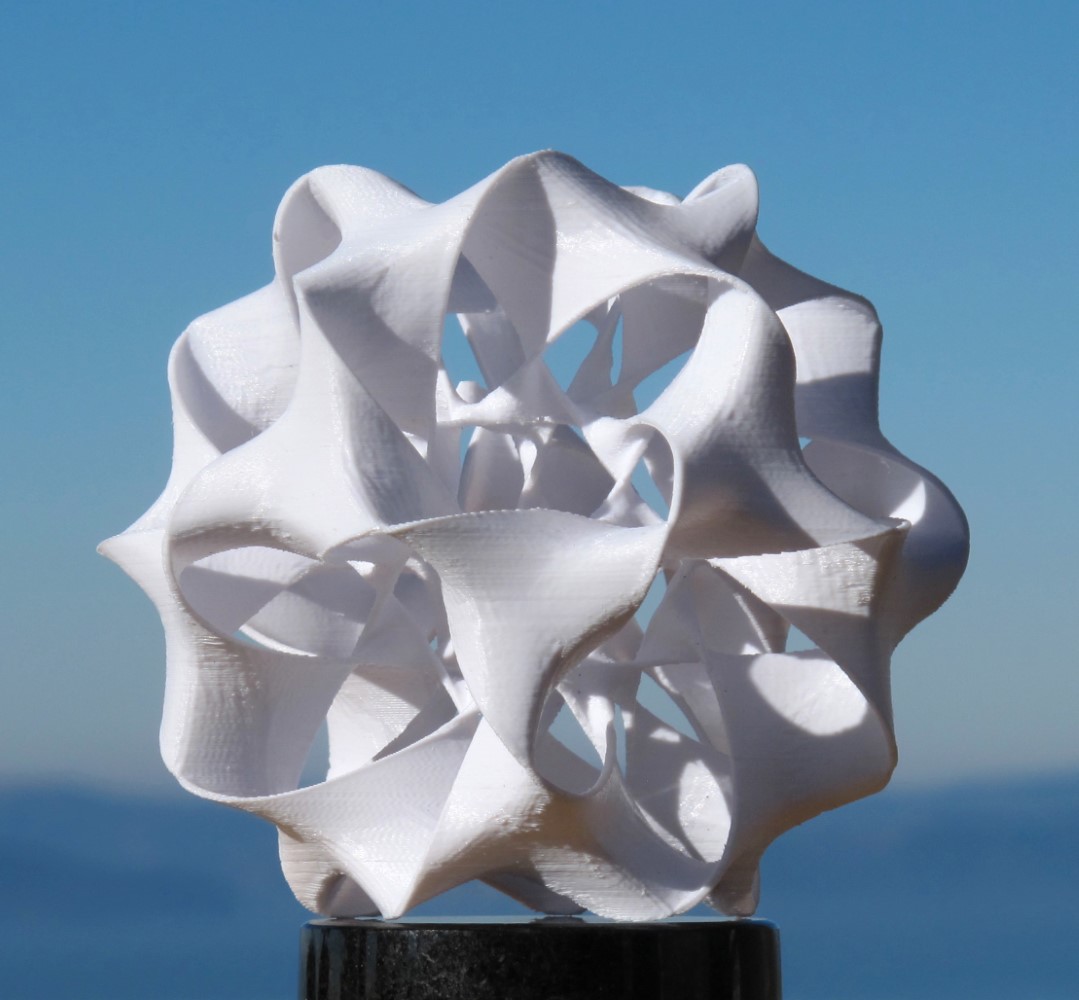Complex Astrobiological Intelligence
The Disequilibrium of Entropic Spaces
Speaks to Cosmic Self-Awareness
by R.E. Slater
The What and The Why
The first question I suppose I should answer is how does science continually end up here on a bible blog? Firstly, because it interests me. Secondly, because theology should never rest alone in a vacuum from any stream of life. Which means religion and theology should always be integrated with all material, ethical, moral, aesthetic, and spiritual aspects of our cosmic world.
Further, a major part of Process Philosophy and Theology, if not its entirety, is it's panrelational, panexistential, and panpsychic qualities bourne along inside it's Whiteheadian bones (as in, Alfred North Whitehead, the British mathematician and philosopher).
When Whitehead proposed his organic theory of matter and the universe (The Philosophy of Organism, later to be known as Process Philosophy) he didn't intend for it to continue the Enlightenment/Scientific Era's reductionary outlook upon the nature of scientific cosmology. He intended to end its unnatural formulations and return to Hegel's shortened life's work to extend and uplift it beyond where it ended.
Whitehead did this by acknowledging Einstein's Relativity Theory of the Large and the resultant Quantum Physics Theory of the Small by escalating their separate revelations together into an integrum of cosmological significance beyond their mere disconnected parts.
Scientifically, relativistic quantum gravity is the cosmic glue physicists are trying to use to bring both the Relativity and Quantum theoretical views together. But in Whitehead, his intention was philosophical. As in the areas of metaphysics and ontology and what those would mean for societal ethics.
Whitehead was looking to bring holism into non-holistic thinking. And for today's Whiteheadian Process Theologian - whether Christian, Buddhists, Jewish, or Islamic - such an endeavor is looking for the cosmic significance - and Cosmic Signifier - to the matter and energy lying behind the cosmic whole.
The Significance of the Processual Whole
Hence, Whiteheadian Process Philosophy and its *compending religious auxiliary known as Process Theology (*compendium - a concise but comprehensive summary of a larger work) each require the view of a universe which is in communication with itself. A deeply integrated and relational communication by however its quantum energies and forces are measured. There is within and about the substance of this cosmic whole we call the universe a kind of panpsychic communication (some may describe this as an aural communication) between itself in particular, and outwardly with the entirety of cosmological matter and forces.
In the human species we call this kind of self-awareness as "consciousness". In the material world of science it may describe this communal interaction as vibrational signaling utilizing frequencies of light, sound and plasmic radiation. In the spiritual world of religion one may call it God or a spirituality of some kind. But however we call this transactional activity found throughout the universe, it is structurally connected in communicating within itself, across itself, and outside of its cosmic "environmental" biomes.
Examples?
- Colonies of ants and bees communicate to their fellow members across their nests and hives.
- Living masses of trees seem to know "who" their competing neighbors are - whether beneficial or invasive.
- Competing entropy systems, whether biological coral reefs - or the mantle of the earth itself - work together to fed off lost energy in the seas and deep within the earth, converting destructive forms of energy into beneficial landscapes inviting more complex entropic systems to become participatory symbiotic hosts and guests.
A processual world, like a processual entropic universe, bears within itself a kind of restorative equilibrium energy by which everything comprehends everything else throughout its "inorganic and organic" spaces. Informing, or communicating, to the other spaces via reactionary entropic cycles of life and death in whatever way we, as humans, might describe these cosmic terms signifying relationship to the experiencing other which are highly aware of their cosmic environments whether as an energy, or as a force, or by some other means of complex communication science might describe as the natural laws of thermodynamics. The point? The universe is not found in its parts and pieces but also in its whole. Its mass. Its entirety as a complex cosmic organism (using the broadest of terms).
Cycles of Processual, Processing, Cosmic Awareness
Human consciousness is not unique nor singular to itself. The universe breathes a kind of "consciousness" within its spaces even as biological spaces do the same as mentioned above.
Human consciousness is but another non-unique expression of a universal "consciousness" or "awareness" of itself. When we look at an ant's intelligence in comparison to a monkey's, a dolphin's, an elephant's, pig, cat, or dog, their consciousness are different in kind to each other even as they are different in kind to our own - or to the cosmic universe we live within.
For science to investigate whether the earth has its own planetary "intelligence" isn't quite the same as asking whether a planetary intelligence is like to our own. As unique and special as the human conscience is it could well be speculated that the earth's planetary intelligence is every bit as connected, integrated, and unique to itself as we are in our own mental, physical, and spiritual capacities.
Moreover, even as dietary regimen, exercise, and spiritual pursuits keep a body's soul in healthy communication with it's complexly integrated environments, so too does the earth's planetary wellbeing have health factors of its own measured in:
- the volcanic activity of released poisonous gases;
- the increasing deoxygenation of earth's densely populated forested jungles due to human ingress and destruction across the Canadian, Siberian, African, and Amazonian biotic masses; and,
- the deadly pollutionary deaths the earth is absorbing into itself measured across its acceding and accretional environmental habitats.
To the degree we, or the earth, remain healthy, indicates the degree to which we better understand how our human-technological imprint on the earth remains healthy or not by how we enable the earth to self-regulate it's own planetary IQ.
Processual Entropy as a Quixotic Amorphous Life-Giver
Remember, entropy is always present within a system turning chaos into occasional results of random wellbeing for entropic states wired to work in this way. In this case, a hot Earth required for its planetary health unique ways to dissipate it's primal heat. Given what it had on hand to use, organic life was able to arise to participate in cooling down the earth lest it boil away into a hot Mercury-like rock.
Though astrophysicists may deny any IQ (Intelligence Quotient) to the Earth's planetary comprehension of itself, Process Thought states the opposite to the science's mechanistic assertion of "matter v mind" reductionism. If the Earth is considered within it's larger cosmological context, the earth's planetary intelligence is everywhere about us. Presently in its disruptive stages to itself due to our disruptive interference to its equilibrium-establishing rhythms and flows.
But Earth's planetary IQ is here and is something we need to attune ourselves to in order to live with the Earth in a more beneficial give-and-take entropic balance of wholeness and completeness. Our species is yet too young and immature to participate with our planet's complexly integrated cosmological IQ. Hopefully we will learn to grow into it and become better participating ecological partners.
Processually Integrated Religions Recognize Evolving Processual Creations
In a Christian context, processual living may be described as learning to live within the flows and rhythms of the Spirit of God. Not only to one another as a human species but to the earth surrounding us.
The Native Americans spoke of these matters in their primal religions even as the Eastern religions of the East do as well. Christianity is but one religion among many which shares a common core to the earth, waters, and sky above.
Christianity's own distinctive lies in its story of God's Incarnation as Jesus, who is acclaimed to be fully God and fully human (not half-and-half like skim milk). And the Christian story speaks particularly to the atonement the Creator God of the universe brought to mankind through Jesus's life, ministry, death, and resurrection.
In this theological matter the other religions lie mute. But when looking around us, these same religions tell the story of life and death, of atonement and redemption. Perhaps not in the same way as the Hebrew-Christian bible overtly declares but in their similarities of theme and construct, wisdom and retribution, purpose and goal.
All acknowledged religions peer into the universe to see life itself built deep down inside its unfolding, driving forces overcoming, and overcomed, by other forces of life and death and life renewed again. The Christian story is not unique or alone in this cosmic story. In the story of God lies the story of Jesus in His own story of life and death and life renewed again.
In its processual form this same redemptive story of atonement is retold everywhere about us. We only need to look beyond the cycles of tragedy and death, or our own caustic material Westernization, to see it.
R.E. Slater
March 12, 2022
* * * * * * * *
 |
| The Iberian Peninsula at night from orbit. (NASA)SPACE |
Astrophysicists Say 'Planetary Intelligence' Exists…
But Earth Doesn't Have Any
February 21, 2022
We tend to think of intelligence as something that describes just one individual. But it's possible to describe all kinds of collectives as intelligent, too – whether we're talking about social groups of humans, enclaves of insects, or even the mysterious behavior of slime mold and viruses.
By extension, could intelligence be observed on a much grander scale – perhaps that of an entire planet? In a newly published paper, a team of space scientists explores this tantalizing question, reaching some surprising conclusions about our very own Earth.
"An open question is whether or not intelligence can operate at the planetary scale, and if so, how a transition to planetary-scale intelligence might occur and whether or not it has already occurred or is on our near-term horizon," the team writes.
They note that understanding this question could help us to steer the future of our planet; however, according to their own criteria, it looks like we're not there yet.
"We don't yet have the ability to communally respond in the best interests of the planet," says astrophysicist Adam Frank from the University of Rochester.
"There is intelligence on Earth, but there isn't planetary intelligence."
According to the researchers, the emergence of technological intelligence on a planet – a common reference point in astrobiology research – should perhaps be viewed not as something that happens on a planet but to a planet.
In such an interpretation, the evolution of planetary intelligence would represent the acquisition and application of a collective body of knowledge operating across a complex system of different species at the same time, and in a harmonious way that benefits or sustains the whole biosphere.
Unfortunately – and obviously – humans and Earth are not at that point yet.
In fact, Frank and his co-authors say we've only made it to the third stage of their hypothetical timeline for the development of planetary intelligence.
- In the first stage, characteristic of a very early Earth, a planet with an 'immature biosphere' develops life, but there are insufficient feedback loops between life and geophysical processes for co-evolution of different kinds of life.
- In the second stage, the 'mature biosphere' has developed.
- Next, a planet could become the third stage: an 'immature technosphere', where Earth currently is. In this stage, technological activity has developed on the planet, but it's not yet sustainably integrated with other systems, such as the physical environment.
- If those tensions can be resolved, however, an immature technosphere stands a chance to develop to the final stage: a 'maturing technosphere', where feedback loops between technological activity and other biogeochemical and biogeophysical states act in sync to ensure maximum stability and productivity of the full system.
- This idealized state is where Earth should be trying to get to, the researchers argue. "Planets evolve through immature and mature stages, and planetary intelligence is indicative of when you get to a mature planet," says Frank.
"The million-dollar question is figuring out what planetary intelligence looks like and means for us in practice because we don't know how to move to a mature technosphere yet."
According to the researchers, we currently sit on a precipice, where our collective actions clearly have global consequences, but we are not yet in control of those consequences.
If, in tandem with other forces on the planet, we can develop a balance where those consequences become controlled, we might finally evolve – as a planet – to the next level.
"A transition to planetary intelligence, as we described here, would have the hallmark property of intelligence operating at a planetary scale," the researchers write in their paper. "Such planetary intelligence would be capable of steering the future evolution of Earth, acting in concert with planetary systems and guided by a deep understanding of such systems."
The paper was published in the International Journal of Astrobiology.














